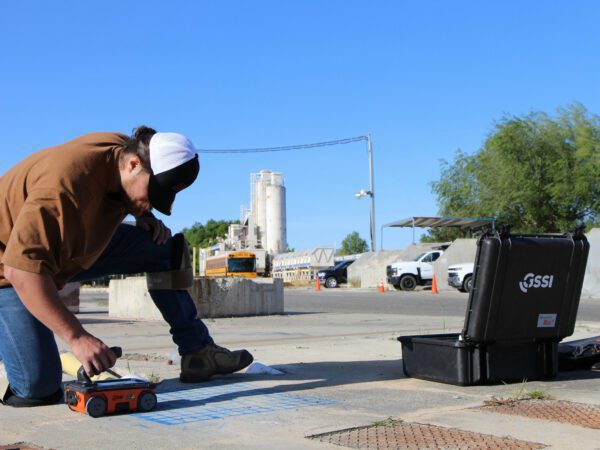Discovering the Depths: A Comprehensive Overview to Concrete Scanning and Its Diverse Applications
In the realm of building and framework growth, the precise process of concrete scanning holds a pivotal role in ensuring the structural integrity and safety and security of tasks. As innovation continues to develop, the applications of concrete scanning have actually increased far past mere surface-level analyses.
Significance of Concrete Scanning
Comprehending the value of concrete scanning is important in ensuring the safety and stability of structures throughout building and remodelling jobs. Concrete scanning uses sophisticated innovations such as ground-penetrating radar (GPR) and electro-magnetic induction to detect ingrained things, gaps, or various other abnormalities within concrete structures.
Moreover, concrete scanning plays an essential role in guaranteeing compliance with building codes and laws that mandate the security of existing architectural components during building and construction tasks. By precisely mapping out the interior make-up of concrete, scanning technologies make it possible for construction experts to make educated choices that promote the architectural stability and longevity of structures and facilities jobs. Essentially, the value of concrete scanning depends on its capacity to protect both the structural honesty and the employees entailed in building ventures.
Technologies Utilized in Concrete Scanning
Concrete scanning counts on sophisticated modern technologies such as ground-penetrating radar (GPR) and electro-magnetic induction to accurately find ingrained items and abnormalities within concrete structures. Ground-penetrating radar operates by emitting high-frequency electromagnetic waves into the concrete. When these waves come across various products or gaps within the concrete, they get better to the surface, permitting the GPR system to create a detailed subsurface image. This modern technology is especially efficient in finding rebar, post-tension cables, conduits, and various other objects embedded in concrete.
Electro-magnetic induction, on the various other hand, functions by creating electromagnetic areas around a concrete structure with a transmitter coil. When steel things exist within the concrete, they interrupt these magnetic fields, creating eddy currents to move via the metal. By determining the modifications in the magnetic fields with a receiver coil, the system can identify the area of metallic objects in the concrete.
These sophisticated technologies play an essential function in non-destructive screening, making sure the safety and security and honesty of concrete structures in numerous sectors.
Applications in Construction Industry
Within the building and construction market, concrete scanning technology finds diverse applications that boost job efficiency and safety. Additionally, concrete scanning is made use of for finding gaps, such as air pockets or areas of degeneration within concrete, which can compromise the total stamina of a framework. Concrete scanning plays an important role in high quality control by verifying the thickness of concrete covers over reinforcement, ensuring conformity with style requirements and requirements.

Safety Benefits of Concrete Scanning
In the realm of construction safety, the execution of concrete scanning modern technology offers an extremely important benefit in preemptively determining possible threats and fortifying structural honesty. By utilizing advanced scanning approaches such as ground-penetrating radar (GPR) and electromagnetic induction, building teams can accurately locate rebar, post-tension cables, channels, and other hidden things within concrete structures. This aggressive method significantly lowers the risk of accidental strikes throughout drilling, cutting, or coring activities, thereby stopping costly damages, injuries, and task delays.
Furthermore, concrete scanning enhances employee safety and security by giving real-time details concerning the structural condition of concrete elements. By addressing potential security problems without delay, concrete scanning adds to producing a safe and secure working setting and minimizing look at here now the likelihood of architectural failings or accidents on construction websites.
Future Patterns in Concrete Scanning
Emerging advancements in scanning innovation are positioned to revolutionize the area of concrete examination and analysis. By taking advantage of the power of AI, these systems can analyze large quantities of information collected during scanning procedures to give more detailed and accurate insights into the condition of concrete frameworks.
An additional substantial trend is the development of more portable and easy to use scanning gadgets. Miniaturization of scanning devices enables less complicated accessibility to confined spaces and remote areas, making inspections more efficient and extensive. Furthermore, innovations in wireless communication technologies make it possible for real-time information transfer and evaluation, facilitating quicker decision-making processes.
In addition, there is an expanding emphasis on sustainability in concrete scanning modern technologies - RainierGPR Concrete Scanning. Makers are increasingly including eco-friendly materials and energy-efficient features into their tools to lower ecological effect. These future trends are readied to enhance the performance, precision, and sustainability of concrete scanning practices, forming the sector's future landscape
Final Thought
In final thought, concrete scanning plays a vital function in the construction sector by guaranteeing the safety and performance of different projects. By making use of sophisticated technologies, such as GPR and radar imaging, experts are able to properly you can try here find possible dangers within concrete structures. The applications of concrete scanning are substantial and remain to advance, making it an essential tool for maintaining the stability of structures and facilities. As technology developments, the future of concrete scanning holds promising advancements for boosting building procedures.
